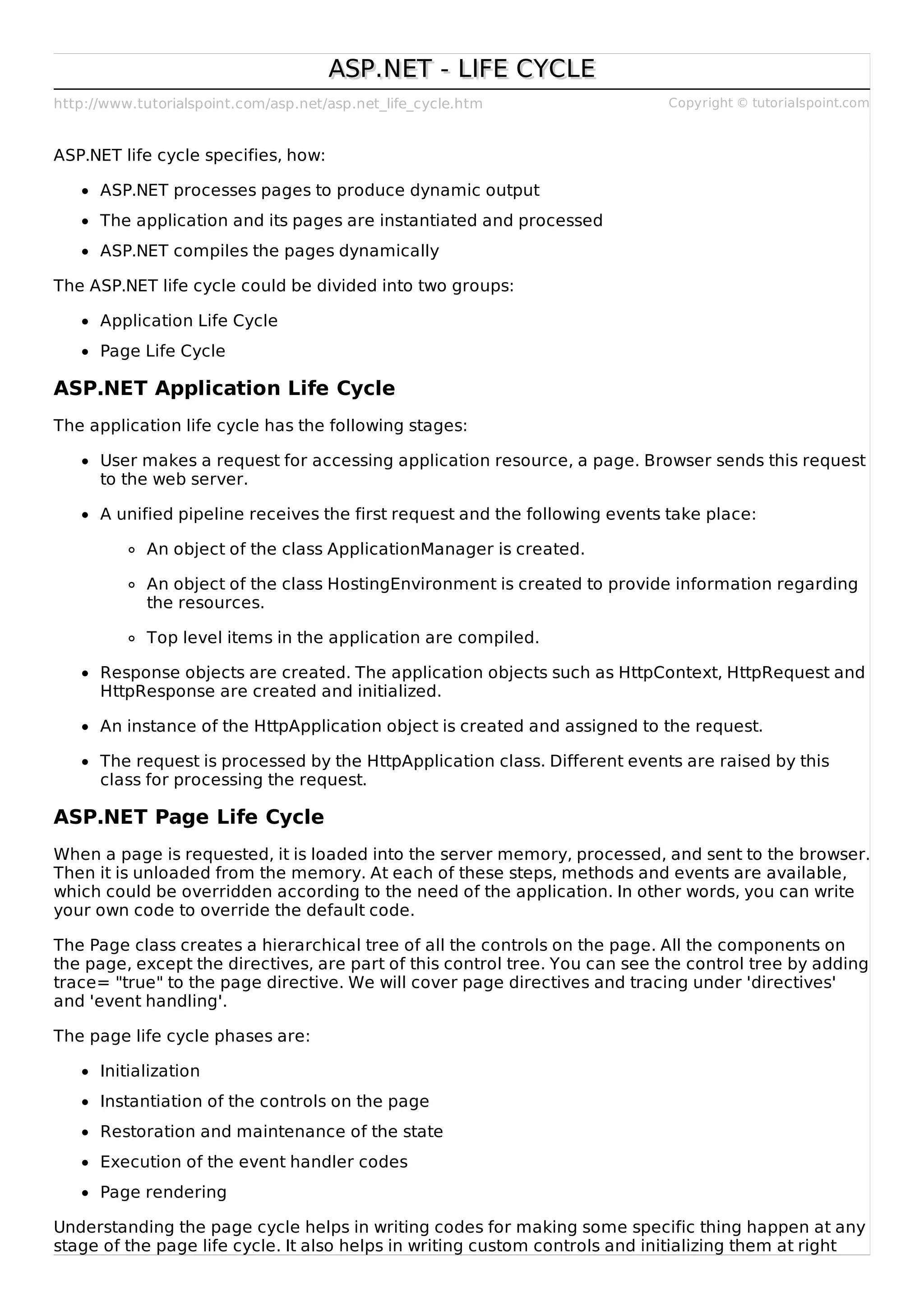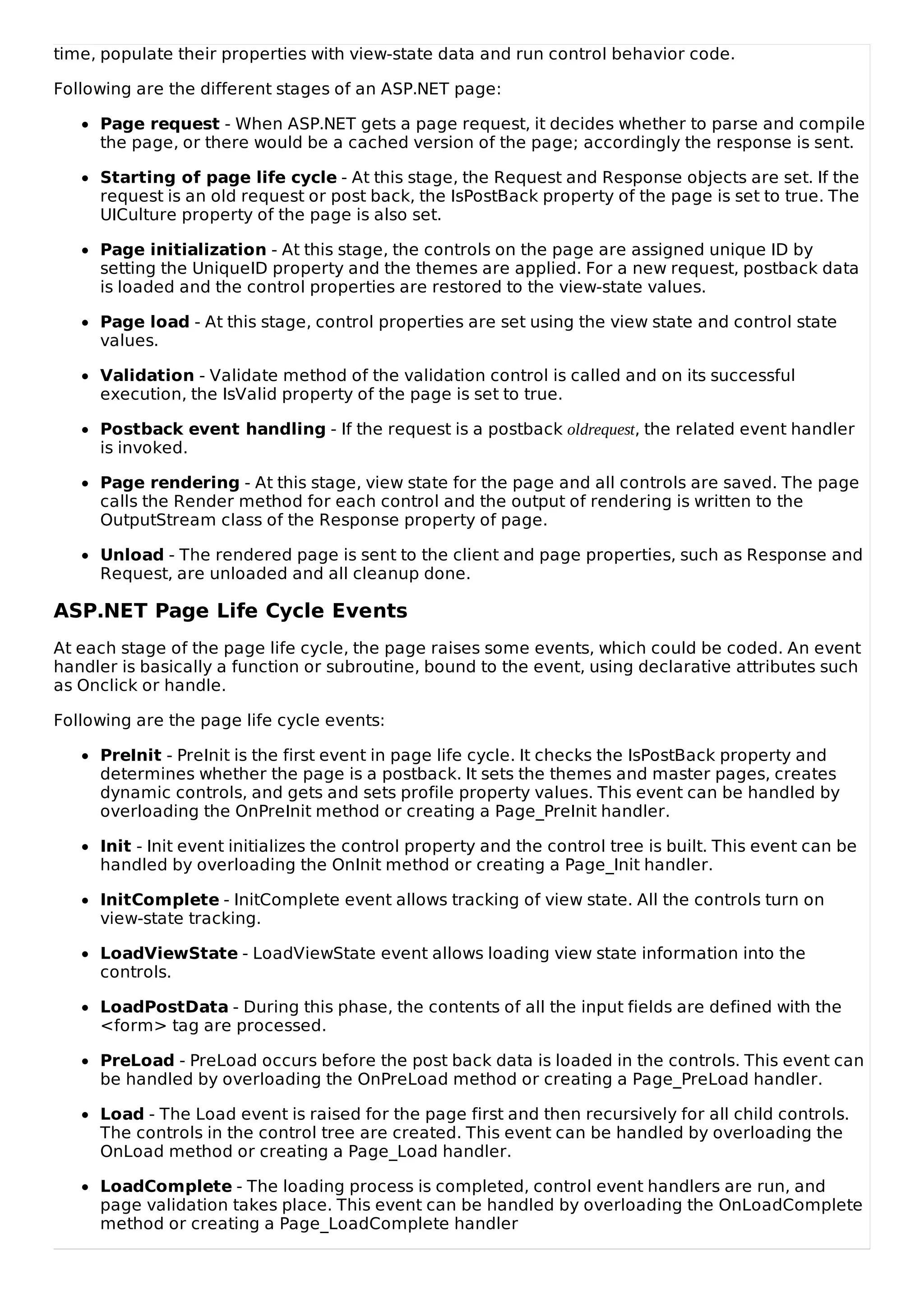The document describes the ASP.NET page lifecycle, which specifies how ASP.NET processes pages to dynamically produce output. It has two main stages - the application lifecycle and page lifecycle. The page lifecycle involves initializing the page and controls, loading and validating data, handling postback events, rendering output, and unloading the page. Key events that occur include PreInit, Init, Load, Render, and Unload. Understanding the lifecycle helps developers write code at the appropriate stages.


![PreRender - The PreRender event occurs just before the output is rendered. By handling this
event, pages and controls can perform any updates before the output is rendered.
PreRenderComplete - As the PreRender event is recursively fired for all child controls, this
event ensures the completion of the pre-rendering phase.
SaveStateComplete - State of control on the page is saved. Personalization, control state
and view state information is saved. The HTML markup is generated. This stage can be
handled by overriding the Render method or creating a Page_Render handler.
UnLoad - The UnLoad phase is the last phase of the page life cycle. It raises the UnLoad
event for all controls recursively and lastly for the page itself. Final cleanup is done and all
resources and references, such as database connections, are freed. This event can be
handled by modifying the OnUnLoad method or creating a Page_UnLoad handler.
Loading [MathJax]/jax/output/HTML-CSS/jax.js](https://image.slidesharecdn.com/asp-180926073659/75/Asp-net-life-cycle-3-2048.jpg)